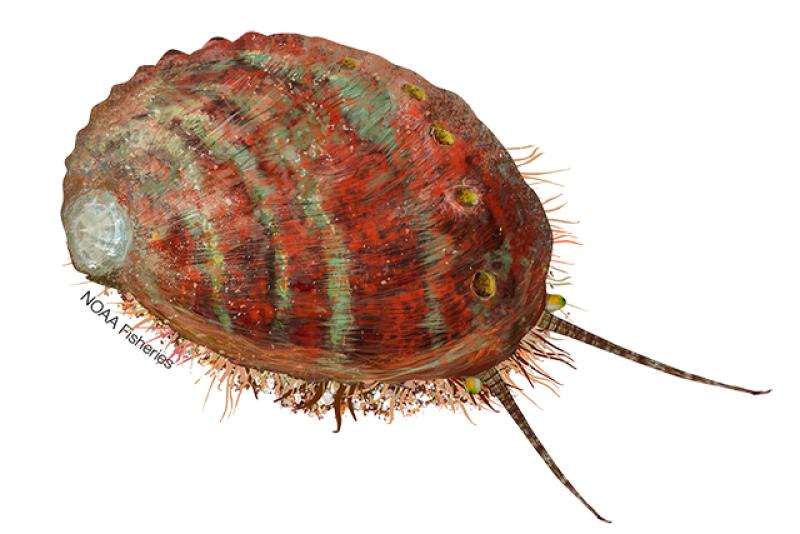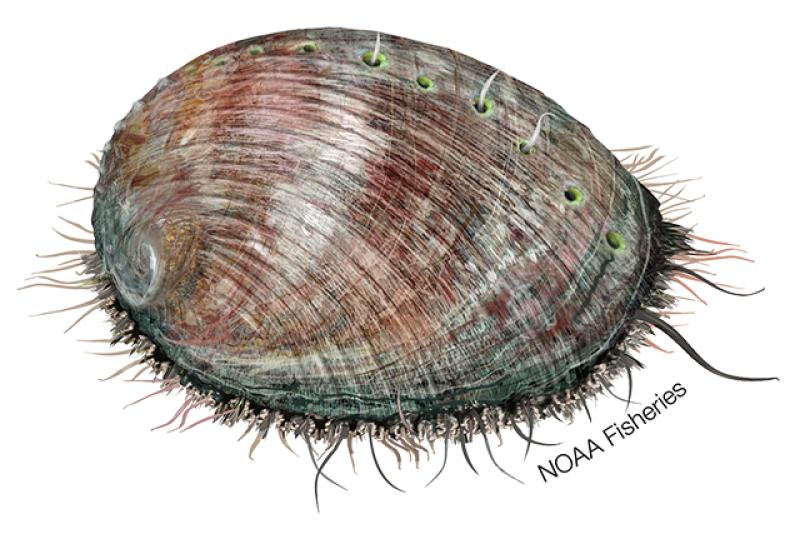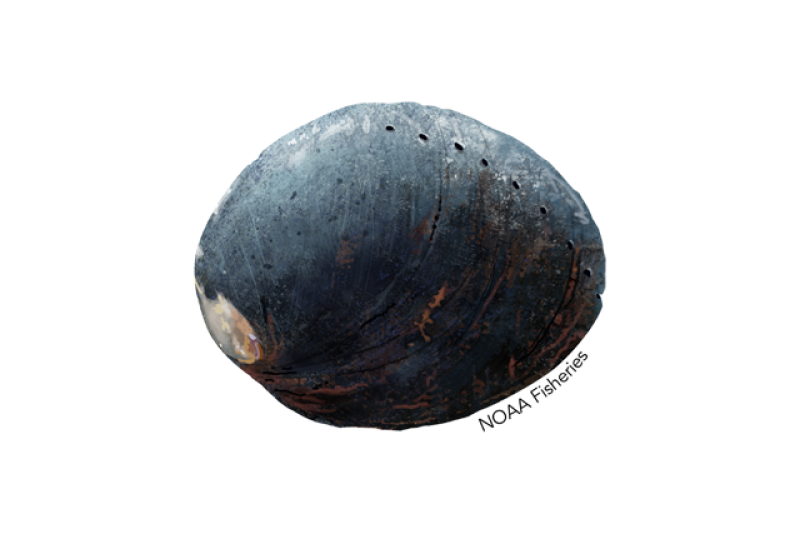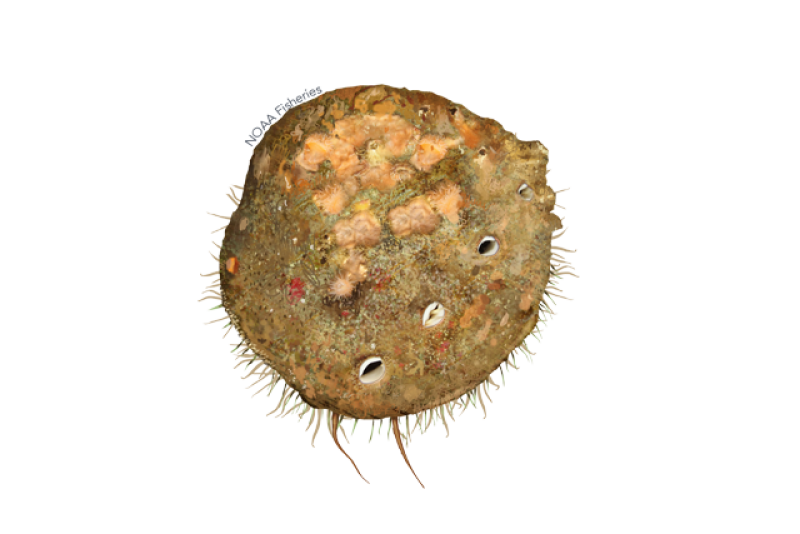Pink Abalone
Haliotis corrugata

Quick Facts

About the Species

Pink abalone are marine snails with one shell and a strong, muscular “foot” that they use to move and to grip onto hard surfaces. Pink abalone range from Point Conception, California, to Bahia de Santa Maria, Baja California Sur, Mexico. They live in sheltered waters at depths between 20 and 118 feet (6 to 36 meters).
The shell, which protects the abalone from predators, is thick, more circular in shape, and characterized by strong corrugations. There are 2 to 4 open respiratory pores with edges that are strongly elevated above the surface of the shell. The epipodium is a “ruffle” of tissue along the side of the foot. The cephalic (head) and epipodial tentacles are black, but the epipodial fringes are a mottled black and white, with many tubercles on the surface and a lacy edge (California Department of Fish and Game 1986).
Pink Abalone have separate sexes and broadcast spawn from March to November. Maturity is reached at about 1.4 inches (35 mm) length, or 3 to 4 years. Pink abalone are herbivores, feeding mostly on kelp and drift algae, and can live up to 30 years or more.
Threats
Demographic and Genetic Diversity Concerns
Population size has declined in many areas. In California, pink abalone fishery landings peaked in 1952 (> 1627 metric tons). By 1990, landings had declined to 1% of the average reported between 1950 and 1970. In 1996, the California Department of Fish and Game (now the California Department of Fish and Wildlife) closed the commercial and recreational abalone fisheries in southern California, but populations continued to decline.
Reduced numbers make the species vulnerable to extirpation due to a phenomenon known as the Allee effect (Allee et al. 1949). The Allee effect describes a situation whereby a decrease in population size leads to decreases in reproduction and survival of individuals. In the case of pink abalone, this effect is likely due to increased distance between males and females as the population density decreases, leading to reproductive failure.
Factors for Decline
The primary factors contributing to the decline of pink abalone are overharvest, suspected illegal harvest, and trade. Other factors include disease (withering syndrome) and elevated water temperatures (e.g., due to El Niño, warm water events).
Information regarding the status of pink abalone in Mexico is scant. A commercial fishery for pink abalone continues to operate in Mexico and is managed by local cooperatives.
Data Deficiencies
Population monitoring and genetic population structure information are needed.
References
- Allee, W.C., A.E. Emerson, O. Park, T. Park, and K.P. Schmidt. 1949. Principles of Animal Ecology. Saunders, Philadelphia, Pennsylvania, USA.
- California Department of Fish and Game. 1986. California Abalone, Marine resources Leaflet No. 11, Marine Resources Division, Long Beach, California, USA.
- California Department of Fish and Game. 2005. Abalone recovery and management plan.
Last updated by NOAA Fisheries on 09/30/2022
Management Overview
Existing Protections and Conservation Actions
Existing protections include a system of California Marine Protected Areas, commercial and recreational fishery closures, and an Abalone Recovery and Management Plan that was adopted in 2005.
Abalone Workshop
In September 2009, NOAA Fisheries held a joint workshop for abalone on the U.S. West Coast. The workshop focused on the three abalone species: green abalone, pink abalone, and pinto abalone. The purposes of this workshop were to bring together current and potential partners to:
- Build partnerships
- Gather information about the species’ status, threats, and research and conservation needs
- Identify research and conservation actions to address threats to the species
The workshop discussions and outcomes are summarized in the 2009 Abalone Workshop Report.
For more information about pink abalone, please contact:
- Melissa Neuman at Melissa.Neuman@noaa.gov or 562-980-4115
- Susan Wang at Susan.Wang@noaa.gov or 562-980-4199
Resources & Partners
Last updated by NOAA Fisheries on 09/30/2022
Research
Abalone Research in the Southwest
This research focuses on our local abalone species to develop methods to support and expand commercial aquaculture in the region as well as aid in restoration programs for federally endangered black and white abalone.
Genetics, Physiology and Aquaculture in the Pacific
We conduct research across multiple focal areas and species through genetic and physiological tools to provide improved data products for managers and industry.
Last updated by NOAA Fisheries on 09/30/2022



